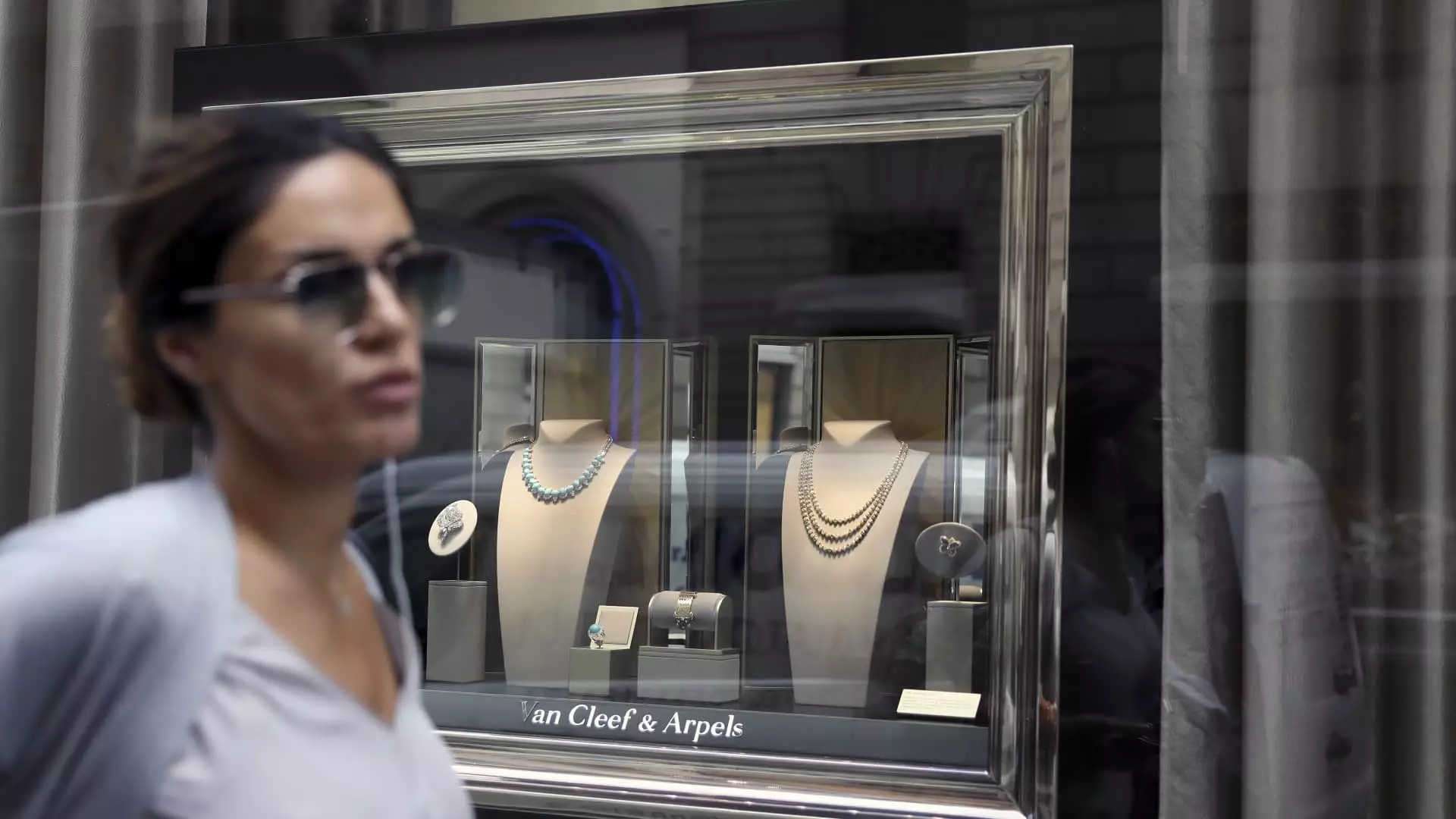The landscape of luxury jewelry is becoming increasingly polarized. While the aspirational middle class grapples with economic uncertainty, the ultra-wealthy class seems impervious to the financial winds buffeting the broader market. In this era, the purchase decisions of billionaires speak volumes about the direction and health of the luxury sector. Affluent consumers are no longer satisfied with just any trinket; they desire exquisite, high-quality jewelry that signifies their status. This signals a growing trend where wealth disparity becomes a collection of ostentation. The Chosen Few, adorned in diamond-encrusted pieces and rare gemstones, are marking clear boundaries of taste and exclusivity against the backdrop of an economic world where others are tightening their belts.
Richemont’s Golden Reign
Among the giants in this ever-evolving narrative, Richemont occupies a throne of unprecedented desirability. The Swiss luxury group’s brands—Van Cleef & Arpels, Buccellati, and Cartier—are not mere names that exist in a catalog; they represent a pinnacle of aspiration for the elite. While LVMH plays an active role in this arena, the clear rankings assign Richemont as a leader, noted for its fine craftsmanship and enduring customer loyalty. An analysis by luxury expert Luca Solca highlights that there’s an unmistakable gap in desirability between Richemont’s coveted offerings and the other players in the field.
The latest announcement of Richemont’s fiscal results reveals an 11% growth in its jewelry division, underscoring the group’s stronghold in the market. When other luxury brands’ sales reports turned grim, Richemont’s jewelry stood tall, a beacon of hope in the storm of economic fluctuations. This exemplar of resilience argues that the appetite for high-end jewelry remains robust, even as other luxury categories face stiffer headwinds.
The Watch Segment: A Facade of Glamour
However, it is critical to dissect this seemingly unassailable position further. Richemont’s company structure also houses its Specialist Watchmakers division, which tells a different story of a market in transition. While the glimmer of jewelry shines bright, the watch segment dips into darker waters. A staggering 13% decline in watch sales, particularly fueled by weaknesses in major markets like China, raises questions about the sustainability of its overall luxury portfolio. In this context, watches, often viewed as long-term investments, are revealing troubling signs of oversaturation as demand plateaus post-pandemic. With consumers having bought watches in droves during lockdown, the market now faces a tough task of digesting this influx.
As Solca observes, the intrinsic nature of luxury watches—often reserved for momentous occasions—means that they are less frequently purchased than jewelry. The dynamic here serves as a double-edged sword; while jewelry sales soar due to increased consumer appetite, the watch segment risks becoming an anchor, pulling down the financial narratives of luxury brands under Richemont’s umbrella. This juxtaposition reveals that even in a seemingly booming sector, peril lurks just beneath the surface.
Market Challenges Ahead
Compounding these fears is the looming uncertainty over global economic conditions. Richemont, like others in the luxury sector, faces several formidable headwinds. The strength of the Swiss franc, coupled with rising gold prices and the abrasive effects of tariffs, can undermine the group’s ability to sustain its market share. As noted by investment director Russ Mould, the luxury market may see significant variations as many external factors come into play, influencing buyer behavior in unpredictable ways.
Richemont’s chairman, Johann Rupert, has expressed confidence in the company’s ability to leverage its jewelry strength, yet the looming complications cast a shadow over future growth projections. By openly refusing to engage in unsustainable price increases—a strategy some competitors appear willing to adopt—Richemont sets itself apart, but also walks a tightrope between maintaining exclusivity and accessibility.
In a landscape where the richer swath of society continues to amplify its desires for handcrafted goods, Richemont exemplifies the dichotomy in today’s luxury marketplace. There’s an undeniable allure in high-end jewelry, but lurking in the background are the challenges of a turbulent economy and evolving consumer sentiments. As Richemont forges ahead, the balance between extravagant growth and sobering market realities will be a critical narrative to watch. While it dazzles today, how will it navigate tomorrow’s uncertainties? Only time will reveal if this titan can sustain its glimmer amidst a world rapidly changing.


Leave a Reply